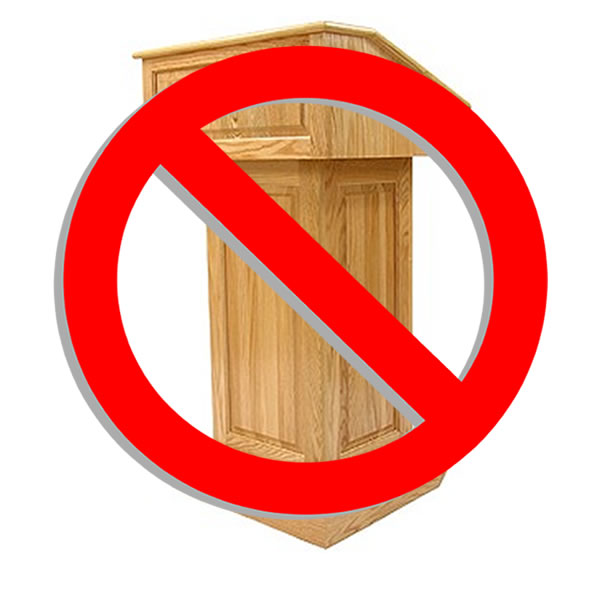Traditional public speak ing has long been associated with the podium. Almost any image related to public speaking from a pastor giving a sermon to the President addressing the media shows the speaker standing behind something. So what I’m about to share flies in the face of generally accepted practice. However, if your goal is to connect with your audience in a meaningful way that engages their attention don’t play hide ‘n’ seek.
ing has long been associated with the podium. Almost any image related to public speaking from a pastor giving a sermon to the President addressing the media shows the speaker standing behind something. So what I’m about to share flies in the face of generally accepted practice. However, if your goal is to connect with your audience in a meaningful way that engages their attention don’t play hide ‘n’ seek.
First, standing behind a podium automatically places a barrier between you and the audience. If you’re not a particularly compelling speaker it’s not wise to intentionally handicap yourself from the beginning by standing behind something. Second, the podium gives you a distraction that pulls your focus from the audience. Whether the podium carries your notes or is simply something to hold onto for security, it is an unnecessary source of stimulation for you that diminishes your capacity to fully engage the people to whom you’re talking.
By its very nature standing behind something is a defensive posture. It’s appropriate for the President when addressing the press because that tends to be an adversarial relationship. In that case the podium is a useful device. But watch our current President when he wants to connect with people and make an impassioned plea for them to support him. He does that on an open platform with no podium. He works the stage, makes eye contact, smiles and uses the microphone for maximum effect.
My next series of posts will address all these skills in detail. But in order for any of the techniques I’m sharing to be fully effective you must first stop playing hide ‘n’ seek.
Leave a Reply